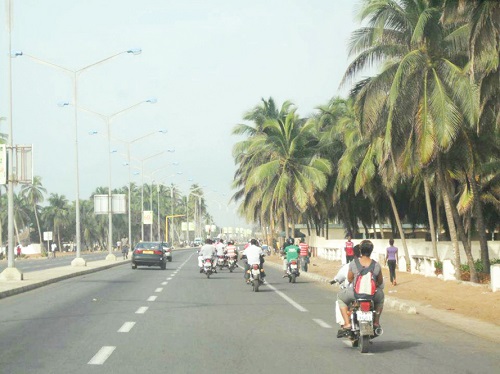
Weekend in Togo
Last week, I explained that I was in Togo in my official capacity as the Secretary-General of the Pan African Writers Association, for the first edition of the Togo International Writers Conference in the capital, Lome, where we were welcomed by the President of the Togo Writers Association, Professor Germaine Koumealo Anate, who is also a Member of Parliament and met some old friends.
Advertisement
The conference, which was to discuss the contribution of African Literature to the UN Sustainable Development Goals, was also designed to celebrate World Book and Copyright Day on April 23. The story continues.
I was also delighted to meet, for the first time, other writers from other African countries including the Egyptian Poet and Journalist, Ashraf Aboud Yazid, with whom I had been in contact for the past three months in his capacity as one of the judges of the recently concluded PAWA Poetry Prize.
Earlier that morning, I departed Accra, Ghana, with my team of PAWA officials for the approximately four-hour road trip to Lome, Togo. Even though it rained most of the way, we were comfortable in the hired air-conditioned coach that glided mostly along the West African Coastline from Accra to Teshie, Tema on to Sege and Sogakope, Atweta, Bakabo Junction, before arriving at the Ghana side of the Aflao border.
Aflao border
Since the government of Ghana had officially opened its border with Togo, immigration proceedings at the border were brief and smooth.
However, matters were not the same at the Lome side of the border, since Togo had not officially opened her border. We, therefore, had to wait longer while our Togolese colleagues who had procured Diplomatic Passes for us sorted issues with the Togolese Immigration officials.
While the language of exchange at the Ghana end of the border was English, we had to switch to French, the official Togolese language, on the Lome side. In addition, we had to change some of our Ghanaian currency, the Cedi, to the Francophone currency of CFA.
These developments led to a resurgence of the old debacle among us on the need for a ‘borderless’ Africa with a common currency and, if possible, a common language.
First day
As planned, the first day of the conference was hectic, with official speeches from Writers Organisations and government officials, keynote addresses, as well as panel discussions. All these continued even after a hearty lunch (D’ejeuner) of pounded yam (yam fufu), light soup and smoked fish, which made me a bit drowsy during the afternoon session of the conference.
The following day, about 40 writers boarded a 60-seater bus for sightseeing in Lome, a city fast brimming with energy and imagination. We departed the University of Lome (established in 1970) and passed an artificial lake on the right, before accessing the serpentine Avenue Akei and turning into Jean-Paul II, the city’s main jugular.
Along the major streets, we chanced upon street sweepers in their translucent and bright uniforms, sweeping to keep the city clean.
Sightseeing
Our first stop was at Baguida, where we took pictures of the monument erected to mark the signing of the treaty between Togo and Germany for a 100-year friendship (1884-1984). The Municipal Counsellor in charge of the area, Mr Doyi, gave us a brief lecture about the monument. We also visited the nearby Marvel Beach, which was, unfortunately, closed at the time of our visit.
As we continued our trip along the Togo/Benin highway; we had a pleasant view of the long coconut tree-lined coastline to our right while the highway on our left was partly closed to construction work.
Once in a while, we chanced upon villages and towns that interspersed the blue waters of the Atlantic Ocean. Overhead from the bus loudspeakers came the strains of the music, ‘Abawi’, by the well-known Ivorian musical group “Espair 2000”. Soon, the bus was filled with the refrain of ‘Abawi o-o—o-o-o’ as some writers who were familiar with the music sang in unison with the musicians.
At Agbodrafo, a rural town, we turned off the smooth highway as our bus jostled along the now bumpy road, with the Atlantic Ocean having shifted to our left. Before long, we arrived at what is considered a major historical site in Togo - the Maison De Esclaves (House of Slaves).
The house which was used to hold slaves before their eventual shipment to Brazil reminded me of the Elmina Castle in Ghana. As we gathered under a mango tree, our tour guide, Gaskin Kpoti D Mensah, gave us a short lecture on the activities of the slave trade in Togo between 1830 and 1852.
He informed us of how the slaves brought from the north of Togo were kept in a narrow and stuffy compartment under the floor of the house awaiting shipment to Brazil.
To be continued...



